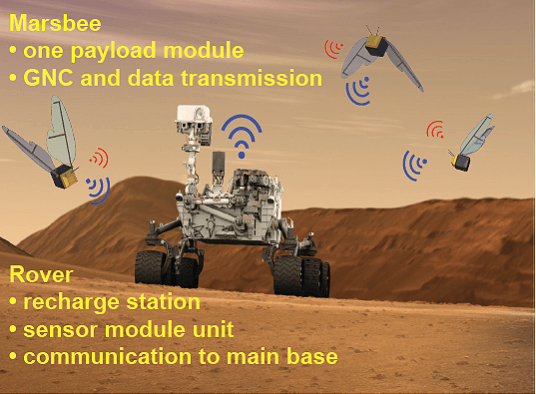
NASA wants to send a swarm of robotic, "flapping wing" bees to Mars to help explore the Martian surface. The robots will be as big as bumblebees with cicada sized wings.
Called Marsbees, the proposed project, if approved, will work alongside a Mars rover which will also serve as a base for operations and recharging station for the swarm.
According to a release from NASA, a swarm of Marsbees can significantly improve the upcoming Mars missions. They highlighted three major advantages to using Marsbees — setting up sensor networks that can be reconfigured as needed, building Mars resilient systems, and collecting samples and data using the swarm as individuals or as a hive mind.
While this concept might seem like a great way to explore the Red Planet, considering how slowly the rovers tend to move, they are yet to be approved for feasibility. The idea has been passed on to a team of researchers for testing. One of these tests will be attempting to fly Marsbees in a vacuum chamber that simulates Martian air density to see how well they can cope in the thin air present on Mars, reports ScienceAlert.
"Our preliminary numerical results suggest that a bumblebee with a cicada wing can generate sufficient lift to hover in the Martian atmosphere," said aerospace engineer Chang-kwon Kang from the University of Alabama, one of the researchers.
"Moreover, the power required by the Marsbee will be substantially reduced by utilizing compliant wing structures and an innovative energy harvesting mechanism."
NASA has awarded $125,000 as part of the Innovative Advanced Concepts program (NIAC) to further develop this idea. The US team will reportedly collaborate with a team from Japan and build these robots. The Japanese team already built a hummingbird-sized robot that can flap its wings and fly, notes the report. The next stage will be to make sure their wingspan, flapping speed, and movement work in the thin air, low-pressure atmosphere of Mars.
As part of NIAC, there are a few more projects that NASA is considering. This includes shape-shifting robots that can work on any surface like the air, land, or even in open waters. A new wandering buggy that can take a load off astronaut suits is also in the works, notes the report.
"The NIAC program gives NASA the opportunity to explore visionary ideas that could transform future NASA missions by creating radically better or entirely new concepts while engaging America's innovators and entrepreneurs as partners in the journey," says NASA's Jim Reuter.














